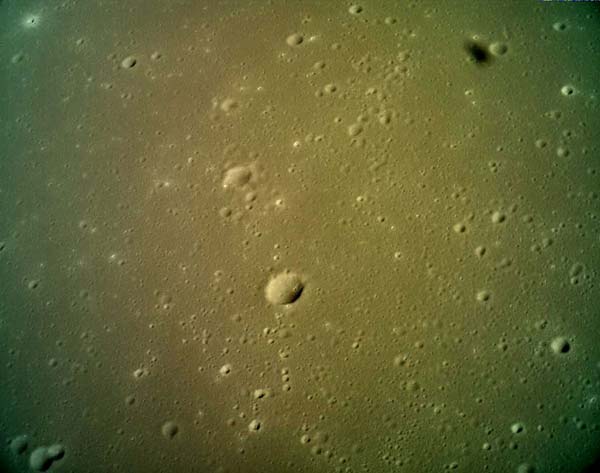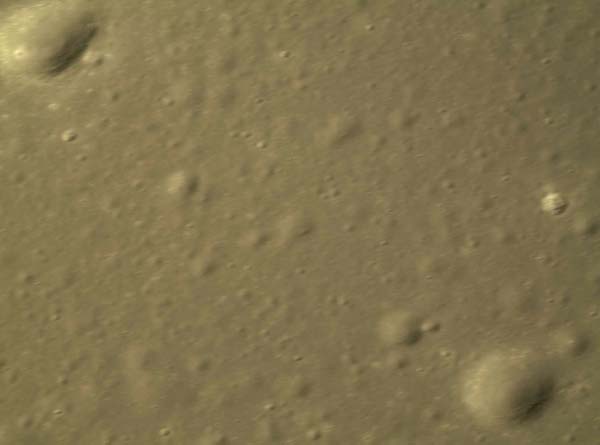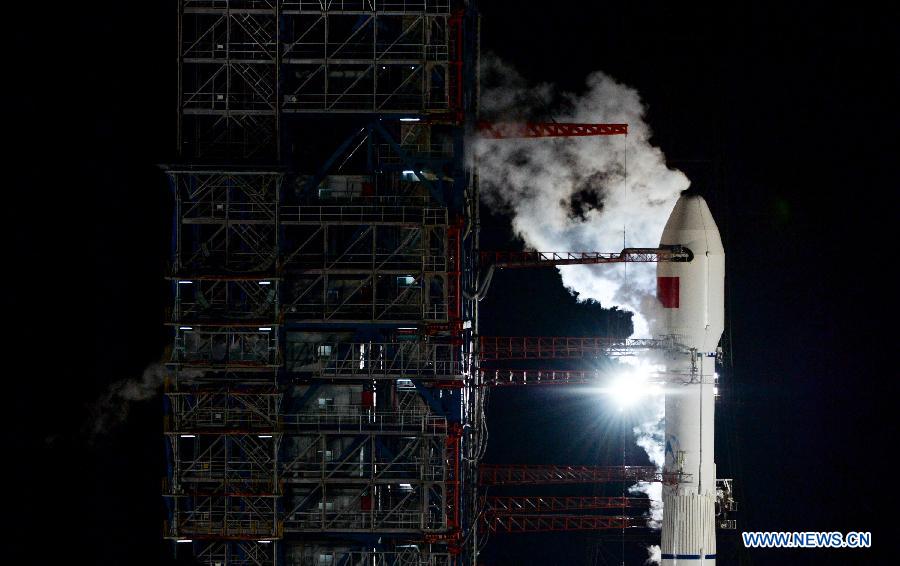How to install the app on iOS
Follow along with the video below to see how to install our site as a web app on your home screen.
Note: This feature may not be available in some browsers.
You are using an out of date browser. It may not display this or other websites correctly.
You should upgrade or use an alternative browser.
You should upgrade or use an alternative browser.
China Space Military:Recon, Satcom, Navi, ASAT/BMD, Orbital Vehicle, SLV, etc.
- Thread starter kvLin
- Start date
cirr
ELITE MEMBER

- Joined
- Jun 28, 2012
- Messages
- 17,049
- Reaction score
- 18
- Country
- Location
Ähhhmm ... but that is the US system under a B-52H !???
You are right。
A similar model has been spotted in a wind tunnel in Mianyang,Sichuan Province。
"It" has apparently been in existence for quite a number of years.
JSCh
ELITE MEMBER

- Joined
- Jun 9, 2011
- Messages
- 13,235
- Reaction score
- 2
- Country
- Location
China's lunar orbiter gets close-up pictures of the Moon
(Xinhua) Updated: 2015-09-03 00:02

An image of a planned Moon landing site captured by an orbiting service module put in place by China's returned unmanned lunar orbiter launched in October last year.[Photo/Xinhua]
(Xinhua) Updated: 2015-09-03 00:02

An image of a planned Moon landing site captured by an orbiting service module put in place by China's returned unmanned lunar orbiter launched in October last year.[Photo/Xinhua]
BEIJING - China obtained detailed images of a planned Moon landing site on Wednesday, where a future Chang'e-5 mission is expected to conduct a soft landing and collect samples.
The pictures, with a resolution of 1 meter, were captured by an orbiting service module put in place by the country's returned unmanned lunar orbiter launched in October last year, according to a statement by the State Administration of Science, Technology and Industry for National Defence (SASTIND).
The SASTIND said the pictures were taken at a point 30 km from the Moon between Sunday and Wednesday.
The module also simulated moves and the controlling process expected to be conducted by the orbiting and ascender modules of the Chang'e-5 probe prior to a scheduled rendezvous by the two modules in the Moon's orbit.
The statement said the current service module is in good condition and will carry out further scientific experiments to study the lunar gravity field.
The latest mission is to obtain data for the Chang'e-5 probe scheduled for 2017, which will see an unmanned spacecraft land on the Moon, collect samples and return to Earth.

The picture is taken at a point 30 km from the Moon.[Photo/Xinhua]
China Aims to Land Chang'e-4 Probe on Far Side of Moon
2015-09-08 19:00:24 Xinhua Web Editor: Li Bin

China's moon lander Chang'e-3 sent back clear images of the moon's surface taken by its panoramic camera on January 17, 2014. Chang'e-3 and the Yutu rover of China's lunar probe mission have collected a large amount space observation and moon exploration data, a government authority said on Friday. [Photo: Chinanews.com]
China is planning to be the first country to land a lunar probe on the far side of the moon, a Chinese lunar probe scientist said Tuesday.
The mission will be carried out by Chang'e-4, a backup probe for Chang'e-3, and is slated to be launched before 2020, said Zou Yongliao from the moon exploration department under the Chinese Academy of Sciences at a deep-space exploration forum Tuesday.
Zou said government organs have ordered experts to assess the plan over the past 12 plus months. "China will be the first to complete the task if it is successful."
The State Administration of Science, Technology and Industry for National Defense announced earlier this year that Chang'e-4 will be launched before 2020.
The far side of the moon, or "dark side of the moon" as it is more commonly called, is never visible to Earth because of gravitational forces. According to Zou, the far side of the moon has a clean electromagnetic environment, which provides an ideal field for low frequency radio study. "If we can place a frequency spectrograph on the far side, we can fill a void."
Zou said Chang'e-4 is very similar to Chang'e-3 in structure but can handle more payload. It will be used to study the geological conditions of the dark side of the moon.
China plans to launch its Chang'e-5 lunar probe around 2017 to finish the last chapter in China's three-step (orbiting, landing and return) moon exploration program.
Li Chunlai, one of the main designers of the lunar probe ground application system, said Chang'e-5 will achieve several breakthroughs, including automatic sampling, ascending from the moon without a launch site and an unmanned docking 400,000 kilometers above the lunar surface.
Chang'e-5 will also have a new launch site and launch rockets, said Li.
Chang'e-3 landed on the moon in 2013, making China the third country after the Soviet Union and the United States to soft land a spacecraft on lunar soil.
China Aims to Land Chang'e-4 Probe on Far Side of Moon
2015-09-08 19:00:24 Xinhua Web Editor: Li Bin

China's moon lander Chang'e-3 sent back clear images of the moon's surface taken by its panoramic camera on January 17, 2014. Chang'e-3 and the Yutu rover of China's lunar probe mission have collected a large amount space observation and moon exploration data, a government authority said on Friday. [Photo: Chinanews.com]
China is planning to be the first country to land a lunar probe on the far side of the moon, a Chinese lunar probe scientist said Tuesday.
The mission will be carried out by Chang'e-4, a backup probe for Chang'e-3, and is slated to be launched before 2020, said Zou Yongliao from the moon exploration department under the Chinese Academy of Sciences at a deep-space exploration forum Tuesday.
Zou said government organs have ordered experts to assess the plan over the past 12 plus months. "China will be the first to complete the task if it is successful."
The State Administration of Science, Technology and Industry for National Defense announced earlier this year that Chang'e-4 will be launched before 2020.
The far side of the moon, or "dark side of the moon" as it is more commonly called, is never visible to Earth because of gravitational forces. According to Zou, the far side of the moon has a clean electromagnetic environment, which provides an ideal field for low frequency radio study. "If we can place a frequency spectrograph on the far side, we can fill a void."
Zou said Chang'e-4 is very similar to Chang'e-3 in structure but can handle more payload. It will be used to study the geological conditions of the dark side of the moon.
China plans to launch its Chang'e-5 lunar probe around 2017 to finish the last chapter in China's three-step (orbiting, landing and return) moon exploration program.
Li Chunlai, one of the main designers of the lunar probe ground application system, said Chang'e-5 will achieve several breakthroughs, including automatic sampling, ascending from the moon without a launch site and an unmanned docking 400,000 kilometers above the lunar surface.
Chang'e-5 will also have a new launch site and launch rockets, said Li.
Chang'e-3 landed on the moon in 2013, making China the third country after the Soviet Union and the United States to soft land a spacecraft on lunar soil.
China Aims to Land Chang'e-4 Probe on Far Side of Moon
More on the mission to the far side of the moon:
A relay satellite will first be launched into lunar transfer orbit. It will then enter into a Halo orbit around the earth-moon L2 point. The satellite, with a 3 year design life, would then provide relay service for the probe and the Earth stations.

A relay satellite will first be launched into lunar transfer orbit. It will then enter into a Halo orbit around the earth-moon L2 point. The satellite, with a 3 year design life, would then provide relay service for the probe and the Earth stations.
Keel
SENIOR MEMBER

- Joined
- Sep 29, 2014
- Messages
- 3,532
- Reaction score
- -14
- Country
- Location
More on the mission to the far side of the moon:
A relay satellite will first be launched into lunar transfer orbit. It will then enter into a Halo orbit around the earth-moon L2 point. The satellite, with a 3 year design life, would then provide relay service for the probe and the Earth stations.
View attachment 255184
Brilliant post which has answered my call
I think it is technically more difficult to send commands and inter-transmission of vital signals between Earth's control center
and the space craft as on the back side there is the blocking mass of the Moon in the path. The problems can be solved by satellites though but I am not sure if US or Russia have already had the full system of satellite operations in place during their moon expeditions decades ago or as advanced as Beidou today
https://defence.pk/threads/china’s-new-lunar-project-to-build-base-at-the-moon.387354/
JSCh
ELITE MEMBER

- Joined
- Jun 9, 2011
- Messages
- 13,235
- Reaction score
- 2
- Country
- Location
China to build high altitude observatory to monitor cosmic rays
Source:Xinhua Published: 2015-9-11 14:15:14
China will invest more than one billion yuan (about $157 million) to build a high altitude observatory in the southwest to monitor cosmic rays, local authorities said on Friday.
The observatory, the second of its kind in China, will be built in the Tibetan Autonomous Prefecture of Garze in southwest China's Sichuan Province, said Cao Zhen, a research fellow with the Institute of High Energy Physics (IHEP) under Chinese Academy of Sciences.
The Garze government and IHEP inked an agreement on Wednesday that will see the observatory built on Haizi Mountain in Daocheng County, where the average altitude is 4,410 meters.
"With an acute gamma ray detector, it is the world's second most expensive cosmic ray observatory, after the IceCube Neutrino Observatory in Antarctica," said Cao Zhen.
The observatory will be able to cover an area of one million square meters, detecting rays whose energy range from one billion trillion to 10,000 billion trillion volts.
Cao didn't give a timetable for construction of the observatory.
Discovered in 1912, cosmic rays are high energy charged particles from outer space that travel at nearly the speed of light and strike the Earth from all directions. The study of cosmic rays could help people learn about supernova explosions, black holes and the origin of the universe.
Study of cosmic rays began in China in 1951. Currently, most research is done in the Yangbajain cosmic rays monitoring station in Tibet.
Source:Xinhua Published: 2015-9-11 14:15:14
China will invest more than one billion yuan (about $157 million) to build a high altitude observatory in the southwest to monitor cosmic rays, local authorities said on Friday.
The observatory, the second of its kind in China, will be built in the Tibetan Autonomous Prefecture of Garze in southwest China's Sichuan Province, said Cao Zhen, a research fellow with the Institute of High Energy Physics (IHEP) under Chinese Academy of Sciences.
The Garze government and IHEP inked an agreement on Wednesday that will see the observatory built on Haizi Mountain in Daocheng County, where the average altitude is 4,410 meters.
"With an acute gamma ray detector, it is the world's second most expensive cosmic ray observatory, after the IceCube Neutrino Observatory in Antarctica," said Cao Zhen.
The observatory will be able to cover an area of one million square meters, detecting rays whose energy range from one billion trillion to 10,000 billion trillion volts.
Cao didn't give a timetable for construction of the observatory.
Discovered in 1912, cosmic rays are high energy charged particles from outer space that travel at nearly the speed of light and strike the Earth from all directions. The study of cosmic rays could help people learn about supernova explosions, black holes and the origin of the universe.
Study of cosmic rays began in China in 1951. Currently, most research is done in the Yangbajain cosmic rays monitoring station in Tibet.
Hope they launch CZ-5 end of this year.Rocket transporters Yuanwang 21 and 22 are en route to Tianjin where the two ships will be loaded with CZ-5 and then make their way to Wenchang launch site in Hainan Island:

JSCh
ELITE MEMBER

- Joined
- Jun 9, 2011
- Messages
- 13,235
- Reaction score
- 2
- Country
- Location
China successfully launches new satellite
Xinhua, September 13, 2015

A Long March-3B carrier rocket carrying an communication technology experimental satellite prepares to be launched at the Xichang Satellite Launch Center in Xichang, southwest China's Sichuan Province, Sept. 12, 2015. The satellite will be mainly used to conduct a test on Ka frequency band in broadband communication. [Xinhua]

A Long March-3B carrier rocket carrying an communication technology experimental satellite flies into the sky at the Xichang Satellite Launch Center in Xichang, southwest China's Sichuan Province, Sept. 12, 2015. The satellite will be mainly used to conduct a test on Ka frequency band in broadband communication. [Xinhua]
Xinhua, September 13, 2015

A Long March-3B carrier rocket carrying an communication technology experimental satellite prepares to be launched at the Xichang Satellite Launch Center in Xichang, southwest China's Sichuan Province, Sept. 12, 2015. The satellite will be mainly used to conduct a test on Ka frequency band in broadband communication. [Xinhua]

A Long March-3B carrier rocket carrying an communication technology experimental satellite flies into the sky at the Xichang Satellite Launch Center in Xichang, southwest China's Sichuan Province, Sept. 12, 2015. The satellite will be mainly used to conduct a test on Ka frequency band in broadband communication. [Xinhua]
cirr
ELITE MEMBER

- Joined
- Jun 28, 2012
- Messages
- 17,049
- Reaction score
- 18
- Country
- Location
A high-resolution Earth-imaging Gaofen-9 satellite was successfully sent into orbit on a Long March-2D rocket from the Jiuquan Satellite Launch Centre at 12:42pm on 14.09.2015:

我国成功发射高分九号卫星_新闻_央视网(cctv.com)

我国成功发射高分九号卫星_新闻_央视网(cctv.com)
Last edited:
55100864
FULL MEMBER

- Joined
- Mar 11, 2014
- Messages
- 462
- Reaction score
- 0
- Country
- Location
14.9.2015A high-resolution Earth-imaging Gaofen satellite was successfully sent into orbit on a Long March-2D rocket from the Jiuquan Satellite Launch Centre at 12:42pm on 14.08.2015:
我国成功发射高分九号卫星_新闻_央视网(cctv.com)
cirr
ELITE MEMBER

- Joined
- Jun 28, 2012
- Messages
- 17,049
- Reaction score
- 18
- Country
- Location
JSCh
ELITE MEMBER

- Joined
- Jun 9, 2011
- Messages
- 13,235
- Reaction score
- 2
- Country
- Location
China launches HD observation satellite
Source:Xinhua Published: 2015-9-14 18:04:32
China on Monday launched its most sophisticated observation satellite, Gaofen-9, as part of the country's high-definition Earth observation project.
Gaofen-9 was launched from the Jiuquan Satellite Launch Center in the northwestern province of Gansu at 12:42 p.m. aboard a Long March-2D carrier rocket. It was the 209th flight of the Long March rocket series.
The optical remote sensing satellite is capable of providing photographs with a resolution of less than a meter. It will be used in land survey, urban planning, road network design, agriculture, and disaster relief.
Developed by the Shanghai Academy of Spaceflight Technology, Gaofen-9 can also serve key national strategies such as the Belt and Road Initiative and national defense.
Gaofen-1, the first satellite of the lineage, was launched in April 2013.
Source:Xinhua Published: 2015-9-14 18:04:32
China on Monday launched its most sophisticated observation satellite, Gaofen-9, as part of the country's high-definition Earth observation project.
Gaofen-9 was launched from the Jiuquan Satellite Launch Center in the northwestern province of Gansu at 12:42 p.m. aboard a Long March-2D carrier rocket. It was the 209th flight of the Long March rocket series.
The optical remote sensing satellite is capable of providing photographs with a resolution of less than a meter. It will be used in land survey, urban planning, road network design, agriculture, and disaster relief.
Developed by the Shanghai Academy of Spaceflight Technology, Gaofen-9 can also serve key national strategies such as the Belt and Road Initiative and national defense.
Gaofen-1, the first satellite of the lineage, was launched in April 2013.
Bussard Ramjet
SENIOR MEMBER

- Joined
- Nov 10, 2014
- Messages
- 3,978
- Reaction score
- 2
- Country
- Location
China launches HD observation satellite
Source:Xinhua Published: 2015-9-14 18:04:32
China on Monday launched its most sophisticated observation satellite, Gaofen-9, as part of the country's high-definition Earth observation project.
Gaofen-9 was launched from the Jiuquan Satellite Launch Center in the northwestern province of Gansu at 12:42 p.m. aboard a Long March-2D carrier rocket. It was the 209th flight of the Long March rocket series.
The optical remote sensing satellite is capable of providing photographs with a resolution of less than a meter. It will be used in land survey, urban planning, road network design, agriculture, and disaster relief.
Developed by the Shanghai Academy of Spaceflight Technology, Gaofen-9 can also serve key national strategies such as the Belt and Road Initiative and national defense.
Gaofen-1, the first satellite of the lineage, was launched in April 2013.
It says sub meter resolution. Does anyone have a more accurate resolution information?
Is it sub 50 cm resolution?
Similar threads
- Replies
- 30
- Views
- 766
- Replies
- 8
- Views
- 311
- Replies
- 0
- Views
- 164
- Replies
- 3
- Views
- 452
Pakistan Affairs Latest Posts
-
Pakistan military officer sues Adil Raja for defamation in unprecedented UK action
- Latest: muhammadhafeezmalik
-



